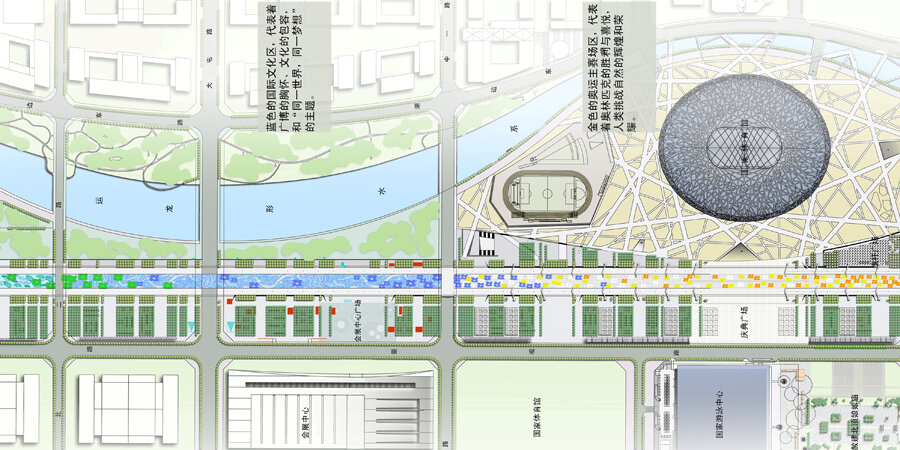2008 Beijing Olympics Central Axis
Beijing, China | 2006 (competition, finalist)
Collaboration Ron Henderson; Tsinghua Urban Planning and Design Institute
Trees (2,800)
The historic north-south axis of Beijing dates to the Yuan Dynasty with the founding of the new capital with its remarkable urban design. The Beijing Olympics is organized along a northerly extension of this axis that connects the city to the Olympic Forest Park with venues, including the National Stadium and Water Cube, flanking this new segment of Beijing’s Central Axis.
The axis is the largest social space for the games and needed to accommodate one million people. As such, people must find comfort. Shade must be provided in the heat. Sun must be present in the cold. Shelter must be found from the rain. The rustle of leaves in the wind must be reassuring. Seats must receive the body and ergonomically support those seeking rest. Materials must moderate the extremes of temperature. Objects must become places. A light must make a place of light - where faces of friends are illuminated. Pavements must kinesthetically propel the body through space but the pavement must become a place too. An accommodation such as a drink of water must be matched with an adjacent place of rest.
The center of the axis is articulated with a complex, pixellated color gradiant. A series of courts along the west side of the axis are shaded with groves of trees that modulate the 5 km axis. Each court provides space for distinct activities and services during the Olympics such as hospitality, health services, refreshments, media events, and ceremonies.






